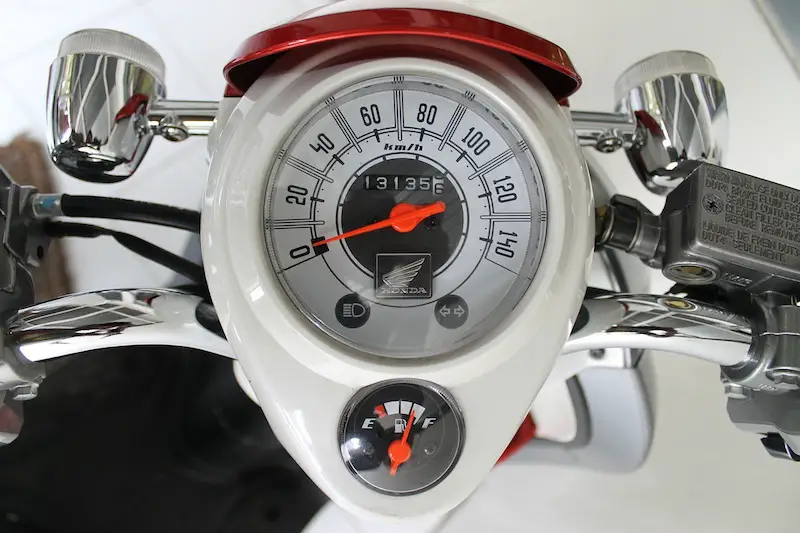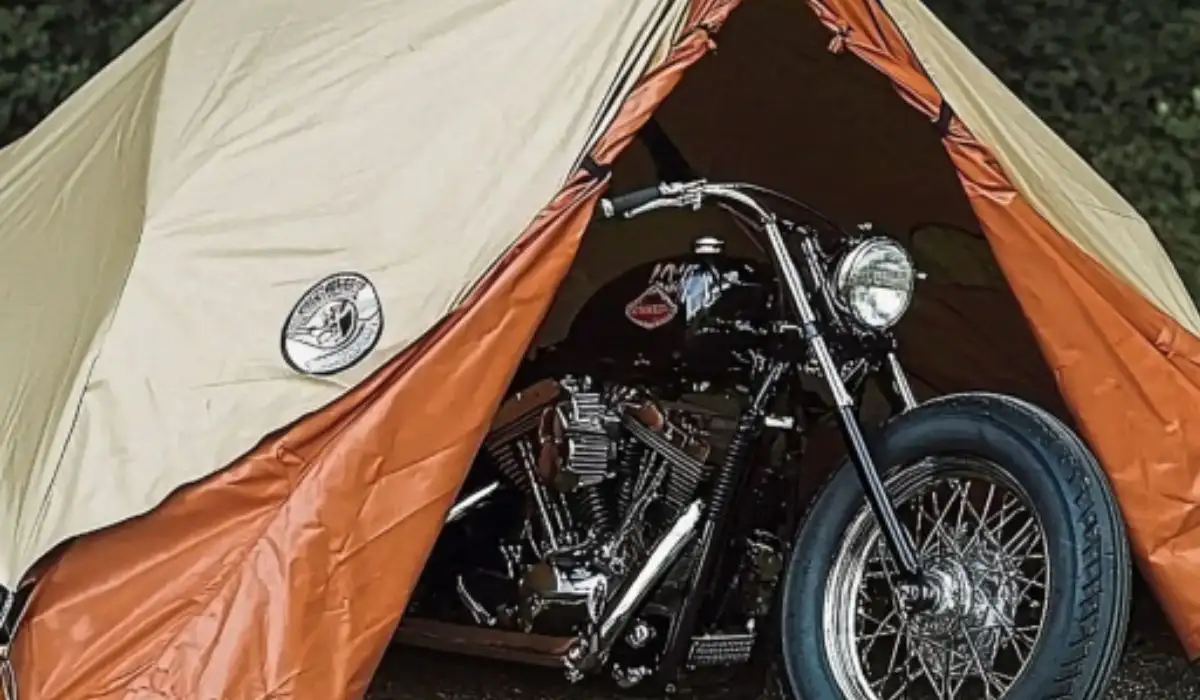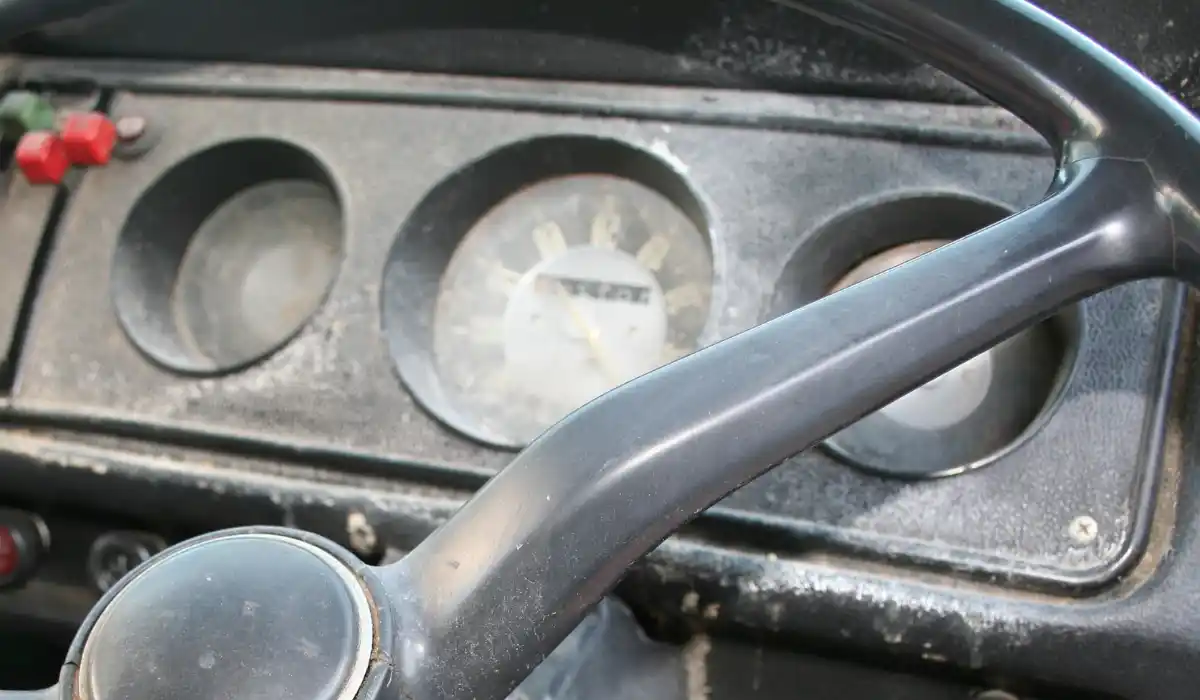
After writing the post on the most fuel efficient motorcycles I wanted to share some helpful tips for riders on how to improve motorcycle fuel economy.
After insurance and maintenance, fuel is the biggest expense that most riders have. With rising fuel costs it’s important to be able to ride your bike in the most fuel efficient way possible if you’re looking to keep costs down.
Sure, it’s fun to redline every now and then, by continually having to fuel up your bike can get old fast. In this post I want to share some helpful tips on increasing motorcycle fuel economy so that you can ride further without having to look for the next gas station.
Jump Ahead To:
Tips For Improving Motorcycle Fuel Economy

Tip #1 – Change Your Riding Style
Changing your style of riding is going to have the biggest impact on motorcycle fuel efficiency besides buying a new bike. While it’s fun to redline every gear and race from a stop, this style of aggressive riding uses noticeably more fuel.
Keeping your RPMs low and riding as smoothly as possible are some of the best ways to increase your motorcycle fuel economy. You should avoid unnecessarily revving the engine and try to upshift as soon as possible to keep the revs out of the redline.
Wearing fuel efficient gear, such as a full face helmet and tight-fitting motorcycle, will help with aerodynamics. The less wind resistance you face the better fuel economy your bike will get.
Also consider removing any saddlebags or top cases to get your bike as aerodynamic as possible. This might not be ideal for some riders, but if you’re not using this gear then it’s better to remove it.
Starting slowly from a stop and shifting gears smoothly will result in a noticeable increase in fuel economy rather quickly.
Tip #2 – Check Tire Pressure

Always keep the tires properly inflated to the recommended PSI for your specific tires. You can find this information on the side of the tire that’s currently installed on your bike.
You should have a compressor for tire pump at home as part of your essential tool kit for motorcycle maintenance. If not, most gas stations have air compressors that you can use for free or a small fee.
Keeping your tires properly inflated will extend their lifespan and give you better fuel efficiency. Tires with low air pressure have an increased footprint that increases drag and decreases their longevity.
It’s a good idea to pick up a digital tire pressure gauge for the most accurate reading of your tire pressure. Avoid filling up the tires too much as this can also have a detrimental impact on your ride and the tire lifespan.
Tip #3 – Drop Some Weight

The more weight your bike is carrying the more fuel it’s going to use. This applies for your body weight as well as the gear you’re packing on your bike.
Like I mentioned above, remove any luggage or cases from your motorcycle that you’re not using regularly. Try to reduce the cargo you’re bringing with you everyday and consider replacing or upgrading some of the heavier stock parts.
Your own body weight can affect the fuel economy as well. If you’re overweight or on the heavier side of the scale consider a healthier lifestyle.
Losing weight will not only improve fuel economy but can also have a positive impact on your life overall. You’ll also find your bike to be faster the more weight you lose if you’re a heavy person to start out with.
Tip #4 – Keep Your Motorcycle Maintained

Another effective way to reduce fuel consumption is to ensure that your bike is properly maintained. You want your ride to be running in the best possible shape so that it’s burning only the fuel it needs to keep going.
Motorcycles that are poorly maintained, specifically the engine, become less fuel-efficient over time. This will result in lower mileage and will have other unwanted impacts on the longevity of your bike.
There are certain aspects of your maintenance that can relate to fuel economy. These include the condition of your spark plugs (change them with new spark plugs if necessary), the clearances of your valves, and the quality of your air/fuel filters.
Changing your oil regularly and using the right type of oil is also important. When in doubt follow the maintenance schedule for your bike to avoid missing any important maintenance.
Tip #5 – Take the Back Roads

Depending on your bike riding at highway speeds in excess of 55 miles per hour can increase fuel use. Not only are the back roads and rural routes more scenic, but your bike will use less fuel when it’s rolling along at slower speeds.
For commuting and shorter rides this might not be possible. You might not want to take the scenic route to get to work or for grocery shopping.
For weekend rides and longer trips you’re better off taking the scenic route on lower speed roads. Each bike has a sweet spot in terms of the speeds it can ride at the best fuel economy.
On my Honda CBR250R i’ll get the best mileage between 80 and 90 kilometers per hour. This is perfect for the rural roads here in Southern Ontario with posted speed limits usually at 80KMH or below.
Tip #6 – Track Your Fuel Usage

Tracking your fuel usage is the best way to determine the fuel economy of your bike. This will also let you know which changes you’re making have the biggest impact.
There are a number of apps you can use, such as Fuelly, that are designed for tracking fuel use. On these apps you can compare your rides to other riders to see the mileage they’re getting.
Personally, I find these apps to be tedious but they can be helpful if you’re looking to maximize the range of your bike. Tracking your fuel usage will also give you a better idea of how much it costs to run your motorcycle.
Tip #7 – Improve Your Fuel Habits

Many people argue that using better quality fuel (higher octane) will improve motorcycle mileage. There’s also the argument that higher octanes are cleaner and better for your engine.
In my opinion you’re better off following what your motorcycle manual recommends. Personally, i’ve used only the recommended octane for my CBR250R and haven’t experienced any issues at all.
However, some people run into issues using lower-quality fuel. These problems can include clogged up carbs, grungy fuel filters, valve pinging, bent valves, and engine knocking.
Should you run into any issues with your engine it’s important to visit your local mechanic right away. They’re the best to determine the cause of these issues and whether or not the fuel is the problem.
As I mentioned above, use the fuel quality that’s recommended from your owner’s manual and you shouldn’t run into any problems.



